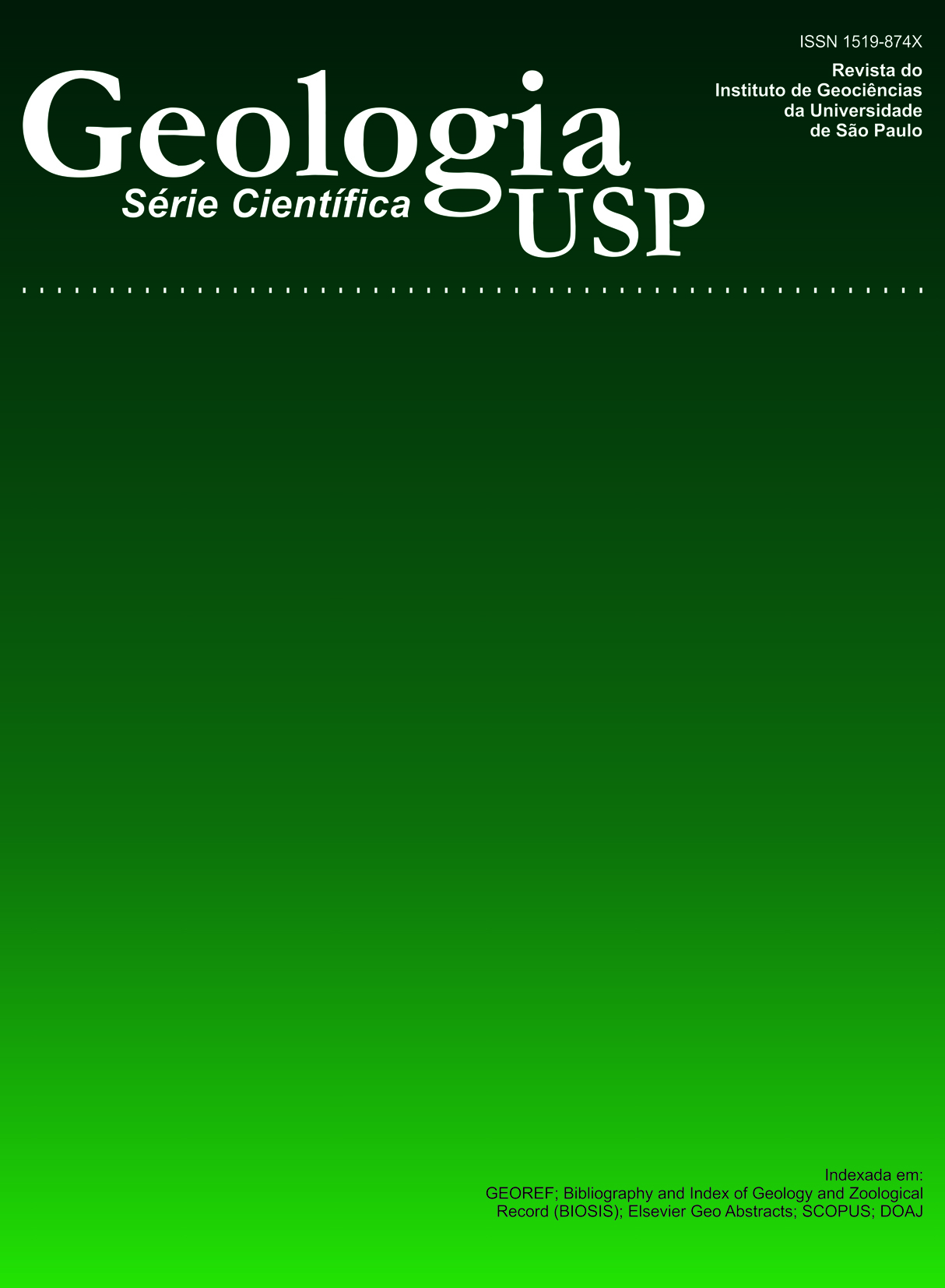The compositional evolution of the phyllosilicates in the lateritic profile of the Catalão I Ultramafic Alkaline-carbonatitic Complex (GO)
DOI:
https://doi.org/10.5327/Z1519-874X2010000200003Keywords:
Vermiculite, Interstratified phlogopite-vermiculite, Lateritic weathering profile, Catalão I, Alto Paranaíba ProvinceAbstract
The compositional evolution of the phyllosilicates in the lateritic profile of the Catalão I ultramafic alkaline-carbonatitic complex (GO) is proposed in this work based on petrographic and X-ray diffraction analysis, as well as, chemical composition obtained by WDS electron microprobe. The micaceous minerals found in unweathered rocks are classified as phlogopites (with different parageneses) and tetraferriphlogopites (metasomatic products). In the levels of altered rocks and isalteritic saprolite, the phyllosilicates derived from micas are vermiculite and regular interstratified phlogopite-vermiculite (which formation and characteristics are similar to hydrobiotite), characterizing a main vermiculitization process in this profile. Subordinately, in the upper portions and punctual areas of isalteritic saprolite, the alteration of the vermiculitized phlogopite generates smectitic products, which are characterized mainly by the occurrence of expansible regular interstratified mineral and even smectite. Kaolinite occurs on the top of the isalteritic saprolite and on the alloteritic level. The evolution sequence of the phyllosilicates in the weathering profile of the Catalão I complex presents the following formation order: phlogopite, interstratified phlogopite-vermiculite, vermiculite, smectitic products (expansible interstratified minerals of local occurrence), smectite and kaolinite, of which, the last two are probably associated to supergene processes. This sequence is compatible with the most recent theories for the formation of clay minerals in soils. The main differences between the phlogopites and their products of vermiculitic alteration are related to a significant decrease of K+ and oxidation of Fe2+, characteristic changes of the vermiculitization process. In the specific case of vermiculites, the interlayer site is filled mainly by Mg2+. In addition to that, the presence of interstratified minerals (intermediate alteration products) is a key indicator of relatively recent and low-altered weathering profiles.Downloads
Download data is not yet available.
Downloads
Published
2010-07-01
Issue
Section
Articles
License
Authors who publish in this journal shall comply with the following terms:
- Authors keep their copyright and grant to Geologia USP: Série Científica the right of first publication, with the paper under the Creative Commons BY-NC-SA license (summary of the license: https://creativecommons.org/licenses/by-nc-sa/4.0 | full text of the license: https://creativecommons.org/licenses/by-nc-sa/4.0/legalcode) that allows the non-commercial sharing of the paper and granting the proper copyrights of the first publication in this journal.
- Authors are authorized to take additional contracts separately, for non-exclusive distribution of the version of the paper published in this journal (publish in institutional repository or as a book chapter), granting the proper copyrights of first publication in this journal.
- Authors are allowed and encouraged to publish and distribute their paper online (in institutional repositories or their personal page) at any point before or during the editorial process, since this can generate productive changes as well as increase the impact and citation of the published paper (See The effect of Open Access and downloads on citation impact).
How to Cite
Azzone, R. G., & Ruberti, E. (2010). The compositional evolution of the phyllosilicates in the lateritic profile of the Catalão I Ultramafic Alkaline-carbonatitic Complex (GO) . Geologia USP. Série Científica, 10(2), 23-43. https://doi.org/10.5327/Z1519-874X2010000200003





